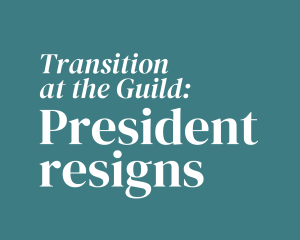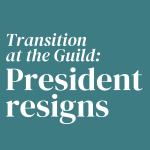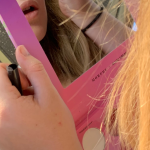 Last Tuesday, the new Labor government presented its first budget and it has people talking. Why? Because this is Australia’s first ever “wellbeing budget”.
Last Tuesday, the new Labor government presented its first budget and it has people talking. Why? Because this is Australia’s first ever “wellbeing budget”.
So, what is a wellbeing budget?
This type of budget looks at the kinds of issues we know impact the economy but are not conventionally seen as economic. For example, do people have secure housing, are they engaged with their community, or are they physically and mentally healthy.
Many Australians are not particularly interested in tax rates, small business schemes, or infrastructure. I know most students aren’t. A wellbeing budget is far more broad reaching than a traditional, economically focused budget, and aims to cover issues that matter to everybody.
So, how will this new budget affect students and young people in Australia? Here is what you need know:
Students
From the outside, it seems like this budget is offering a lot for students. $50 million will be spent to modernise our TAFE facilities, including up-to-date IT, workshops, and laboratories. Over the next four years, around 480,000 fee-free TAFE and community-based vocational education places will be created, with a focus on students who may have faced increased barriers to study. 20,000 additional university places will be added over the next four years, allocated to people from low socio-economic backgrounds, rural and remote areas, people with disability, First Nations people, and those who are the first in their family to attend university.
This is great news for future students. If they choose to enrol in “areas of skill shortages”, such as nursing or education. This is not beneficial for students looking to enrol in creative industries, a move which echoes previous budgets.
Student visa holders will have their work restrictions relaxed until 30 June 2023, which means they will be able to work additional hours. This change is great news for international students, many of whom are struggling to survive under the current restrictions.
Wages
The Fair Work Commission has announced a minimum pay rise of $40 per week for full time workers earning minimum wage.
And that’s basically it. While the budget also included frameworks for strengthening employment conditions, reducing barriers to pay equity claims, and simplifying access to enterprise bargaining, there was no other mention of fixed wage increases. This means it will be up to the employees to negotiate with their employers.
Real wage growth is predicted to restart in 2024, which means it may be several years before growth reaches pre-pandemic levels.
Affordable and available housing
Under the new National Housing Accord, around 30,000 new social and affordable homes will be delivered over five years from 2024, as well as one million new, well-located homes. Well-located means land in and around public transport hubs like train stations or TAFE campuses, or land with close access to public infrastructure or city centres.
The country is facing a housing crisis right now and these homes won’t be available until at least 2024, which means the current shortage will still be a major concern to many Australians for the foreseeable future.
Climate change and the environment
While the government hasn’t brought forward the nation’s net zero target, it has enshrined in law the emission reduction targets of 43% by 2030 and net zero by 2050.
Almost $2 billion has been allocated to protect, restore, and manage the natural environment which includes clean up and restoration of urban waterways, programs to save threatened native species, maintaining and expanding Indigenous Protected Areas, and $1.2 billion to protect and restore the Great Barrier Reef by 2030.
Youth engagement
The Government has announced a new Youth Engagement Model, the purpose of which is to give a voice to young people. The aim of the model is to give young Australians the opportunity to shape the future of policy through the Youth Steering Committee. This committee will represent young people from diverse backgrounds between the ages of 12 and 25, and will work closely with the Minister for Youth to advocate for policies that matter to young Australians.
Health
While there was no specific mention of mental health spending for university students, the Government has allocated $23.5 million to expand the Headspace network, with new sites set to be established in Bribie Island, Caloundra, and North Brisbane.
A particularly exciting health care announcement is the national rollout of 50 Urgent Care Clinics, which will provide much needed relief for our hospitals and emergency departments, and will increase access to bulk-billed health services.
Infrastructure
We all know how slow Australia’s internet speed is. And if you don’t, you might be interested to know our world ranking is currently between Jordan and Vietnam. This budget has allocated $2 billion to be invested in the NBN to extend fibre-to-the-premises access to 1.5 million homes. This will provide faster and more reliable service, connecting businesses and communities in the outer suburbs and regional areas.
***
In Australian, this type of budget has historically been viewed in a negative light by the opposition. The approach has been labelled “hippy economics”, and the previous treasurer, Josh Frydenberg, has publicly derided the very idea of a wellbeing budget, with references to incense and meditation.
Only time will tell if this budget approach will improve the standard of living and positively impact the lives of Australians.







